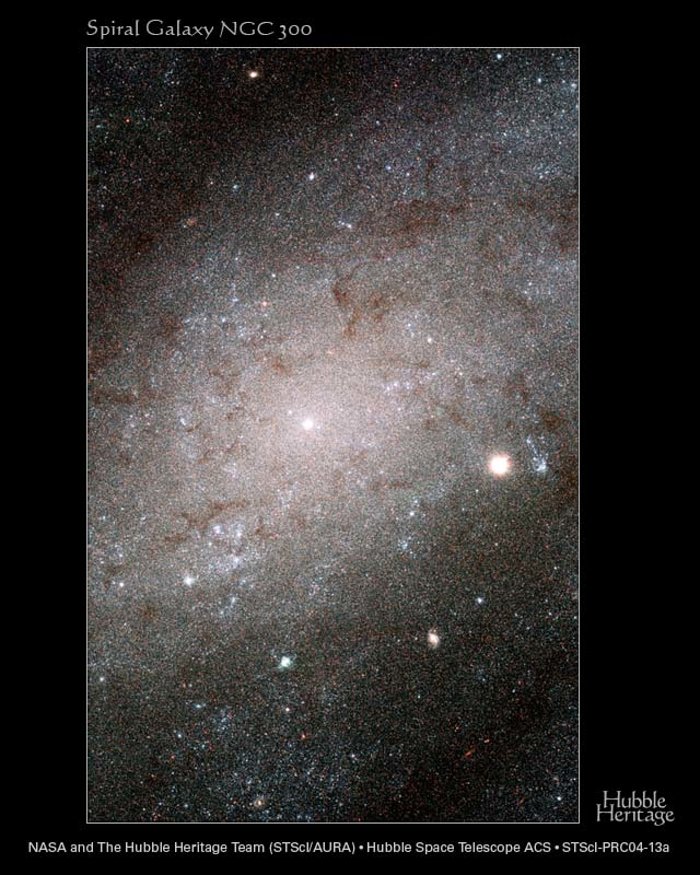Hubble sees stars as numerous as grains of sand in nearby galaxy
Myriads of stars embedded in the heart of the nearby galaxy NGC 300 can be singled out like grains of sand on a beach in this Hubble Space Telescope image. The Hubble telescope's exquisite resolution enables it to see the stars as individual points of light, despite the fact that the galaxy is millions of light-years away.
NGC 300 is a spiral galaxy similar to our own Milky Way galaxy. It is a member of a nearby group of galaxies known as the Sculptor group, named for the southern constellation where the group can be found. The distance to NGC 300 is 6.5 million light-years, making it one of the Milky Way's closer neighbors. At this distance, only the brightest stars can be picked out from ground-based images. With a resolution some 10 times better than ground-based telescopes, Hubble's Advanced Camera for Surveys (ACS) resolves many more stars in this galaxy than can be detected from the ground.
The colour composite was made from filtered images taken in blue, green, and infrared light. Hot, young blue stars appear in clusters that form in the galaxy's spiral arms. Ribbons of deep red stars mark the location of gauzy curtains of dust that partially hide the light of the stars behind them. Near the center of the image is the bright and compact nucleus of the galaxy where even the ACS loses the ability to separate the densely packed stars.
The individual exposures that were combined to make this new image were taken in July and September 2002. These Hubble data are being used to test a new method for measuring distances to galaxies and to compare it with the more traditional methods, such as the period-luminosity relationship of pulsating stars known as Cepheid variables. Measuring distances is a perpetual but important concern for astronomers.
Some of the luminous blue specks in this image, young and massive stars called blue supergiants, are among the brightest stars seen in spiral galaxies like NGC 300. By combining the stellar brightness with other information, such as the stellar temperature, surface gravity and mass outflow, astronomers are defining a new technique to measure distances to galaxies located millions of light-years away.
Credit:About the Image
About the Object
| Name: | IRAS 00525-3757, NGC 300 |
| Type: | Local Universe : Galaxy : Type : Spiral |
| Distance: | 6 million light years |
| Category: | Galaxies |
Colours & filters
| Band | Wavelength | Telescope |
|---|---|---|
| Optical B | 435 nm |
Hubble Space Telescope
ACS |
| Optical V | 555 nm |
Hubble Space Telescope
ACS |
| Infrared I | 814 nm |
Hubble Space Telescope
ACS |
